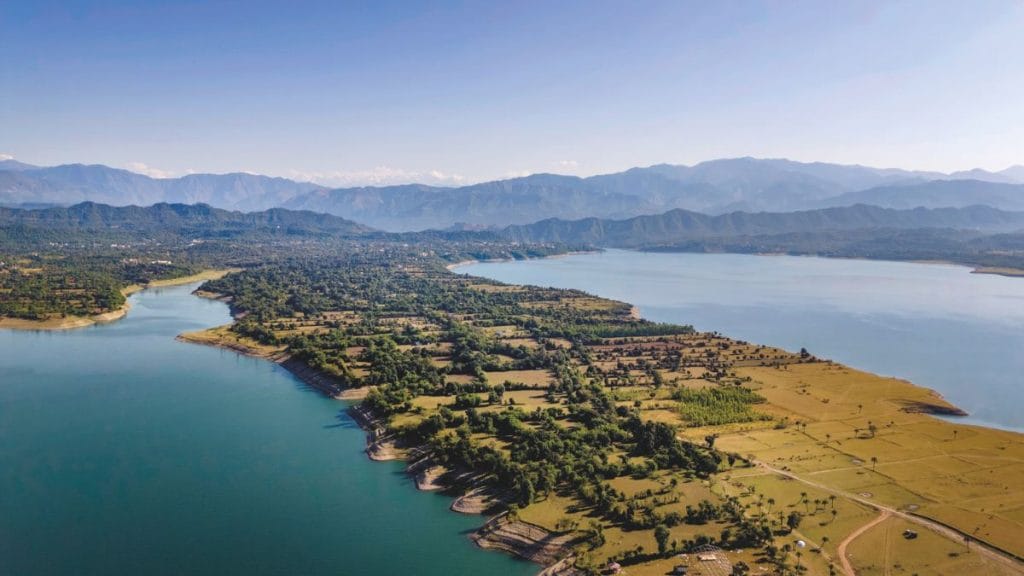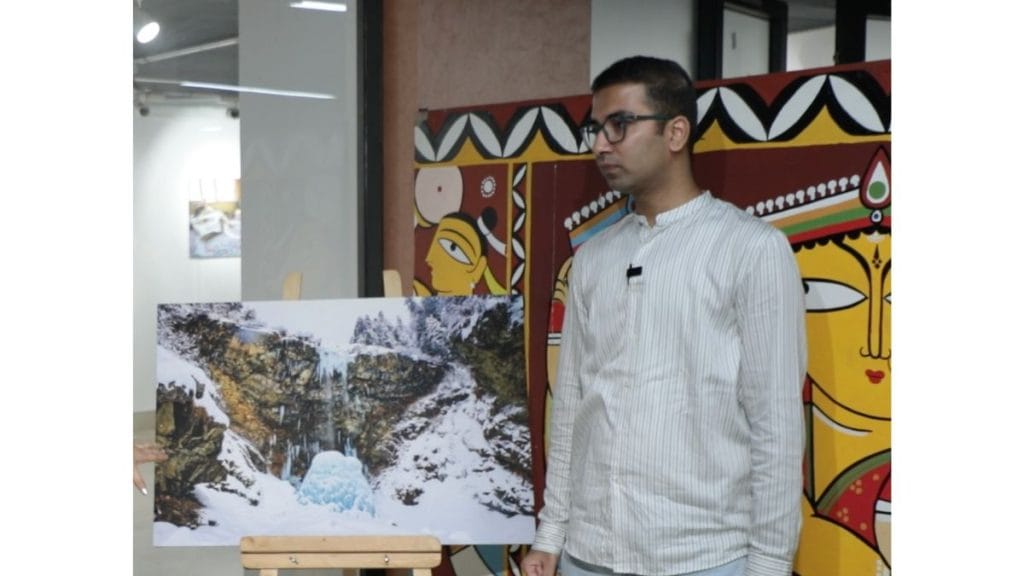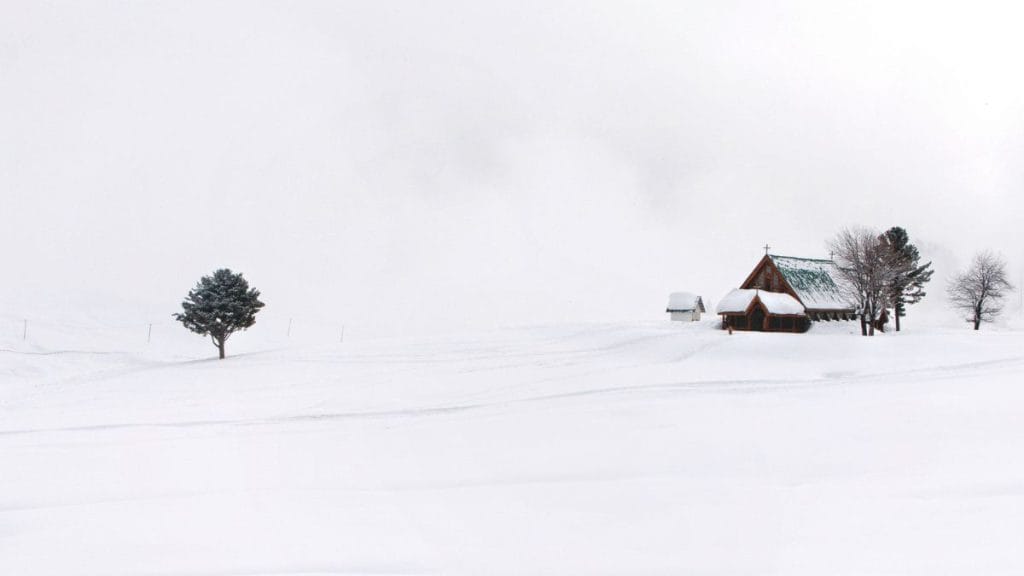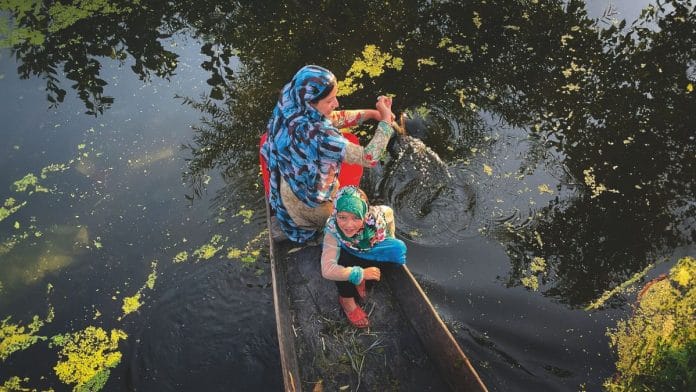New Delhi: A train chugs through the snowy landscape of Banihal. A panoramic photograph of it is spread across an entire page of a book. The mountains are wrapped in snow, green roofs peek through the white, and a pink-blue-grey train pierces the silence. Photojournalist Ashish Sharma transports the reader straight to Kashmir. It’s almost as if they’re standing there, watching the train pass by.
The photo of the recently inaugurated 48.1 kilometre Banihal-Khari-Sumber-Sangaldan section—that connects Kashmir to the rest of India by rail—features in his new coffee table book, Reimagining Jammu and Kashmir: A Pictorial Journey.
The photographs are on display at the Indira Gandhi National Centre for the Arts in Delhi till 1 July. The exhibition was inaugurated by Lieutenant Governor Manoj Sinha on 16 June. Most of the photographs are of Kashmir after 2019, when Article 370 was abrogated.
But the year is significant for another reason, said Sharma. It’s also the year that the Smart Cities Mission was launched in Jammu and Kashmir, and the photojournalist set out to document that transformation.
“It was the Smart City initiative and the way the landscape of Jammu and Kashmir was changing that prompted me to document it through pictures. Daily life was returning to Srinagar, children going to school, and one could sense a feeling of normalcy among the locals,” said Sharma, as he walked through the gallery of his exhibition at IGNCA.

In the introduction to his book, Sharma encapsulates this by recalling his father’s words—Waqt badalte der nahi lagti (It doesn’t take long for time to change).
A Kashmiri from Maharashtra
Sharma was born and raised in Kashmir, though he traces his roots to Maharashtra. His forefathers came to Kashmir during the Maharaja’s rule as jagirdars (landlords). Since then, the family has been living in Srinagar.
“My father was born in Bijbehara, and I was born near Lal Chowk in 1989,” said Sharma.
Having faced the brunt of militancy firsthand, Sharma picked up the camera to capture life during its darkest, most violent years. When he was just eight, he witnessed militants barge into his home and point guns at his father. He said that when growing up, he hardly attended school because militancy was at its peak.
“So more than anything, I was tempted to capture the transformation,” said Sharma.
One of Sharma’s photographs captures Lal Chowk’s iconic clock tower, thronging with people. They’re taking selfies, calling friends, and simply enjoying themselves on a late summer evening. Another photo takes the viewer to the Jhelum riverfront, where two friends pose for a selfie with the river flowing quietly in the backdrop and the Zabarwan mountains registering their presence in the distance.
In yet another moment frozen in time, people are watching a movie at an INOX theatre—marking the reopening of theatres in Kashmir after 30 years.
“This is the new Kashmir. Nightlife has returned. People are enjoying themselves. When the movie Pathaan was released, the theatre was houseful for weeks,” said Sharma.

Sharma’s photos not only capture the mountains, snow, waterfalls, and what he calls “the changed” landscape of Jammu and Kashmir—they also document its religious diversity. One photo takes the viewer to Chatti Patshahi, the biggest gurudwara in Kashmir; another leads to Hazratbal mosque and Shankaracharya temple. And suddenly, you find yourself outside a snow-wrapped church in Gulmarg.
The unseen Jammu
Sharma also captures the unseen Jammu. For the longest time, Jammu has been like a child lurking in the background of Kashmir. Sharma has tried to bring it into the frame.
From the enchanting green Jai Valley in Bhaderwah district to Mansar Lake in Samba, and the Basholi paintings of Kathua—he spotlights a side of Jammu that few know about.
Known as the city of lakes, the tranquil waters of the Ranjit Sagar Dam at Basholi are fondly called Mini Goa by locals. The lake, with jagged peaks in the background and green pastures around, makes Jammu come alive.
“The idea was to show Jammu because we often forget that it’s Jammu and Kashmir, not just Kashmir. And Jammu also has its own identity,” said Sharma, whose mother is from Udhampur.

As one enters the exhibition hall, a small plaque catches the eye. It reads: “Agar firdaus bar roo-e zameen ast, hamin ast-o hamin ast-o hamin ast.” Originally in Persian, it is also translated into English and the Sharda script: “If there is a paradise on earth, it is this, it is this, it is this.”
(Edited by Theres Sudeep)







where is Jammu here?